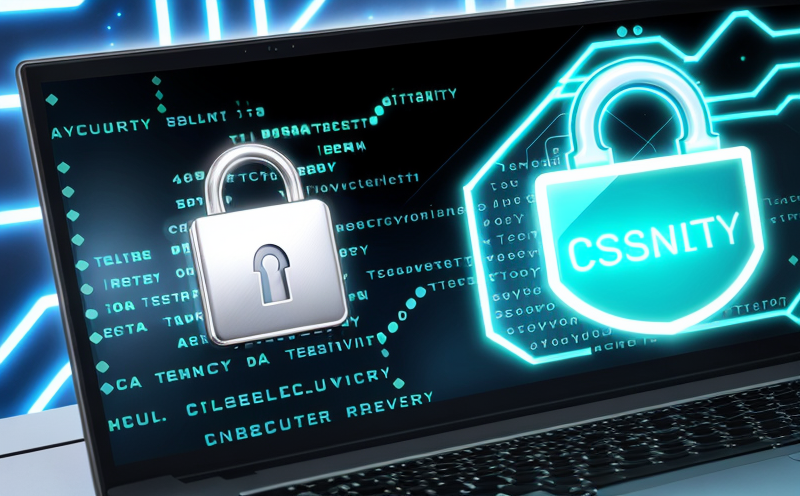ISO/IEC 15408 Common Criteria Security Evaluation for IoT Devices
The ISO/IEC 15408 standard provides a framework and methodology to evaluate the security of IT products and services. This standard is widely used in various sectors, including smart homes and Internet of Things (IoT) devices, ensuring that these technologies meet stringent cybersecurity requirements.
For IoT devices, this evaluation involves multiple stages of analysis aimed at identifying potential vulnerabilities and weaknesses. The Common Criteria process evaluates security policies, operational environment specifications, assurance requirements, and protection profiles tailored specifically for the device in question. This ensures that all aspects of the device’s design are considered from a cybersecurity perspective.
The testing procedure begins with a detailed review of the device's architecture and software components. Our experts analyze system interfaces, data flow paths, and interaction points to ensure they do not expose sensitive information or allow unauthorized access. Once these initial assessments are complete, we proceed to conduct penetration tests and vulnerability scans using both automated tools and manual methods.
These tests simulate real-world attack scenarios to identify any exploitable flaws within the system. The results of these evaluations provide valuable insights into how well the device can resist external threats while maintaining performance levels expected by end-users. Additionally, this process helps manufacturers understand where improvements may be necessary in future iterations or updates.
The final step involves documenting findings comprehensively and providing recommendations for addressing any issues discovered during testing. A report outlining all aspects of the evaluation is prepared, which includes detailed descriptions of the evaluated device's security features alongside actionable steps required to enhance overall protection against cyber threats.
By adhering strictly to ISO/IEC 15408 standards throughout our evaluation process, we ensure that every aspect of an IoT device’s functionality and design meets industry best practices. This approach not only enhances user confidence but also supports regulatory compliance requirements across different markets globally.
In summary, applying the Common Criteria security evaluation methodology allows us to provide comprehensive assessments that address potential risks associated with smart home and IoT devices effectively. Through rigorous testing procedures and meticulous documentation processes, we deliver robust solutions designed specifically for securing modern technology applications.
Industry Applications
The application of ISO/IEC 15408 Common Criteria Security Evaluation extends beyond just smart home products; it plays a crucial role in ensuring the security and privacy of IoT devices across various industries. In healthcare, for instance, medical-grade wearable devices must ensure patient data is protected from unauthorized access or breaches.
Manufacturers of connected appliances like refrigerators and washing machines need to guarantee that personal information such as shopping habits or household routines remain confidential when transmitted over networks. Similarly, automotive manufacturers rely on this standard to secure vehicle control systems against hacking attempts.
Smart city initiatives often involve integrating numerous IoT devices into urban infrastructure for efficient management of resources. Here too, ensuring robust security measures is paramount to prevent malicious actors from disrupting critical services or causing harm through cyberattacks.
In summary, whether it's protecting personal health information in healthcare settings, safeguarding daily routines in consumer electronics, or maintaining public safety in smart cities, the Common Criteria evaluation ensures that IoT devices meet rigorous security standards across diverse applications.
Why Choose This Test
The ISO/IEC 15408 Common Criteria Security Evaluation offers several advantages over other types of cybersecurity assessments. First and foremost, it provides a standardized approach to evaluating IT products and services globally. This consistency ensures that evaluations are conducted consistently across different regions and organizations.
A key benefit is the ability to tailor security policies specifically for each IoT device being evaluated. By understanding the unique characteristics of your product, we can design a comprehensive evaluation plan that addresses all relevant security concerns effectively. This customized approach ensures no aspect of your device goes unexamined during testing.
The Common Criteria also emphasizes continuous improvement throughout the lifecycle of an IoT device. From initial development stages through production and maintenance phases, this standard encourages ongoing assessment to identify emerging risks promptly. As threats evolve rapidly in today’s digital landscape, this proactive stance helps keep your devices secure against new vulnerabilities.
Moreover, adhering to ISO/IEC 15408 standards enhances trust among users who rely on IoT technologies for critical functions like healthcare or transportation. By demonstrating adherence to recognized international guidelines, you can reassure customers about the reliability and safety of their products.
In conclusion, choosing this type of evaluation not only strengthens your organization’s reputation but also contributes significantly towards achieving long-term success in securing modern technology applications.
Customer Impact and Satisfaction
The implementation of ISO/IEC 15408 Common Criteria Security Evaluation has numerous positive impacts on customers. One significant benefit is increased trust and confidence in the security measures implemented by manufacturers. When consumers know that their devices have undergone rigorous evaluation according to internationally recognized standards, they are more likely to feel secure using them.
Another key advantage for customers is enhanced peace of mind knowing that potential threats have been identified early on during product development rather than after deployment when damage might already be done. This proactive stance ensures that issues are addressed before they become widespread problems affecting large numbers of users simultaneously.
Additionally, improved security leads to better experiences overall since devices function optimally without interruption from malicious actors trying to exploit weaknesses in the system. Reliable performance enhances user satisfaction and loyalty towards brands that prioritize cybersecurity.
Furthermore, compliance with these standards helps businesses avoid costly penalties associated with data breaches or unauthorized access incidents. By demonstrating adherence to recognized international guidelines, companies can mitigate legal risks while also showcasing their commitment to responsible practices.





